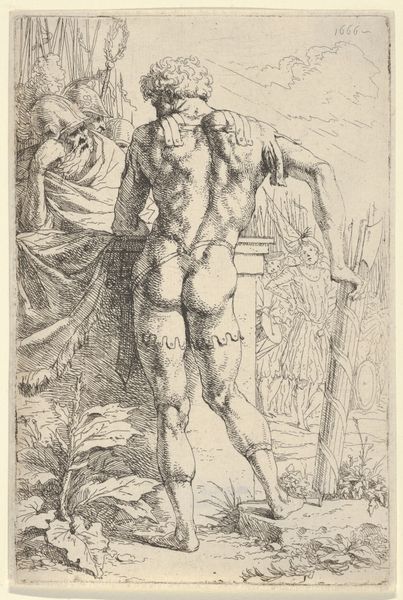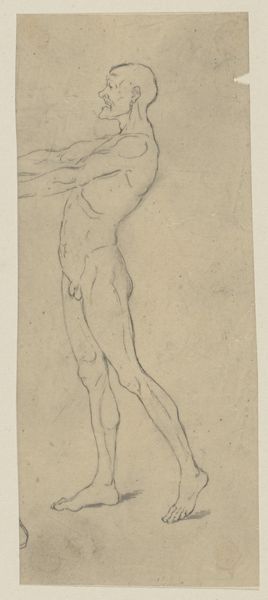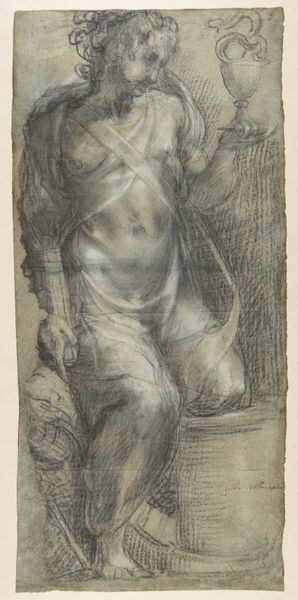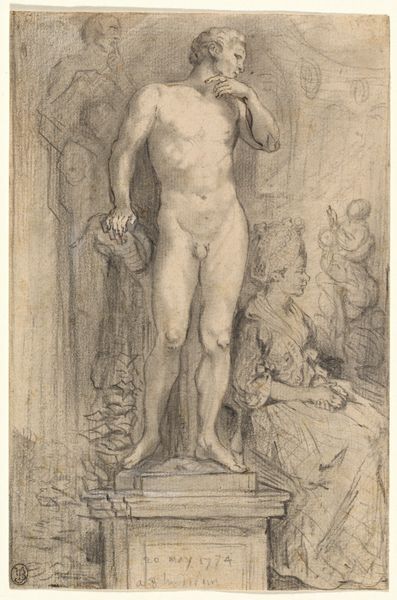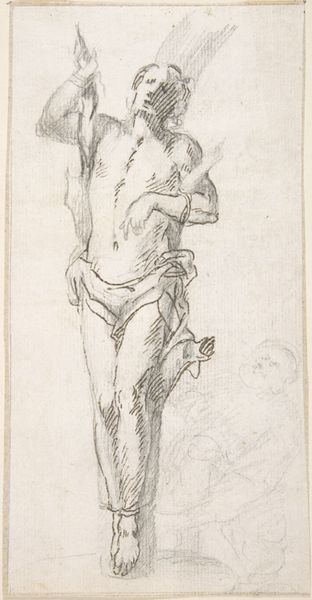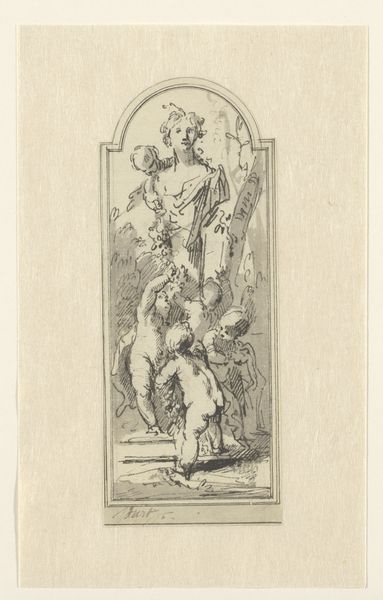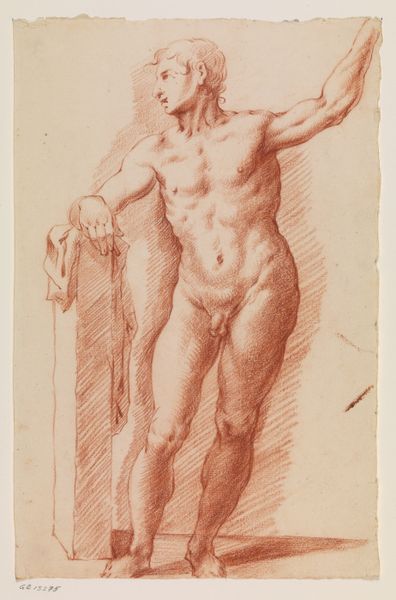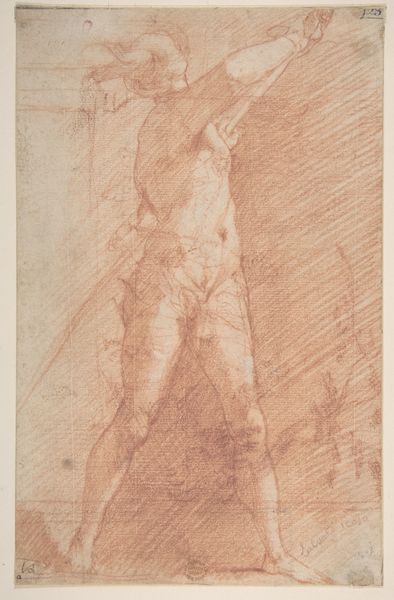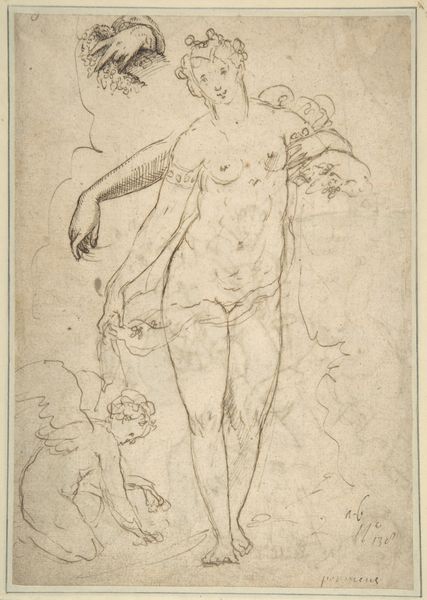
Recto:Nude Female Figure in a Niche Verso: Study for a Fountain 1830 - 1868
0:00
0:00
drawing, pencil
#
portrait
#
drawing
#
pencil sketch
#
figuration
#
female-nude
#
pencil
#
nude
Dimensions: 12 x 7 1/4 in. (30.5 x 18.4 cm)
Copyright: Public Domain
Curator: I’m drawn to the wistful nature of this pencil sketch. The subject’s obscured face, the unfinished rendering… it suggests a quiet melancholy. Editor: This is a drawing by Hans Gasser, titled "Recto: Nude Female Figure in a Niche Verso: Study for a Fountain." It’s dated sometime between 1830 and 1868 and currently resides here at the Metropolitan Museum of Art. It feels like a preparatory study, doesn’t it? A working-through of ideas. Curator: Precisely. Note the framing of the figure within the arched niche, adorned with vegetation. It feels classical, evoking a sense of the garden, or a grotto – perhaps a space of secluded contemplation. The draped figure feels… burdened, almost as if she’s carrying the weight of memory. Editor: It's intriguing how Gasser uses the classical form but avoids idealization. The woman’s body is rendered realistically, lacking the polished perfection we often associate with academic nudes. That subverts the dominant narratives around the female nude, and speaks to the rising sense of realism that would shortly dominate visual representation. Curator: True, the imperfections resonate. It moves beyond mere objectification, suggesting a vulnerability, an interiority. The loose pencil strokes and unfinished quality only amplify that sense of fragility. There's something honest about the lack of complete finish. I wonder what meanings female viewers, perhaps seeing themselves represented in a less idealized fashion, might have attributed to this sketch. Editor: Context is critical: Gasser was working in a period of immense social and political upheaval, from industrialization to shifting power structures. Did the artist consciously subvert expectations of traditional statuary in response? That ambiguity speaks volumes about the changing attitudes towards academic representation in this period, when the traditional certainties began to crumble. Curator: Ultimately, the symbolic language, even in this sketchy format, speaks volumes. It reveals a fascinating psychological tension between ideal form and imperfect reality, reflecting societal unease of the era. Editor: Exactly, this study offers an intriguing portal into the evolving public and political attitudes toward the arts. The artist appears caught between traditional techniques, forms, and functions and what amounts to more novel expressions. Curator: Thank you. It's given me a deeper understanding of Gasser’s use of traditional imagery for an evolving present, highlighting memory’s burdens in the emerging era. Editor: Agreed, this initial study serves as a valuable record of changing values around aesthetics and socio-cultural dynamics within 19th century society.
Comments
No comments
Be the first to comment and join the conversation on the ultimate creative platform.
